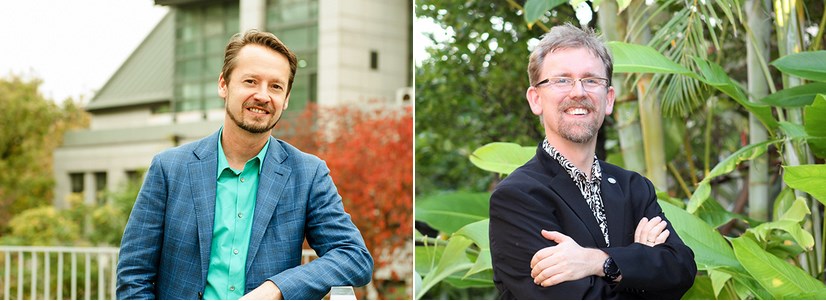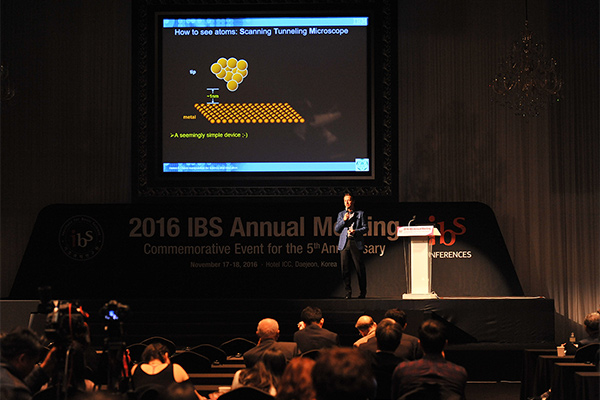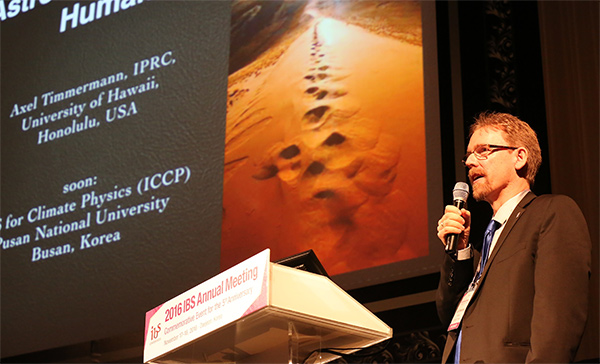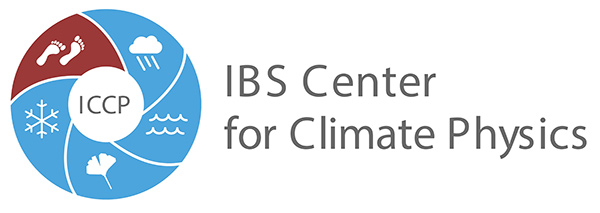주메뉴
- About IBS 연구원소개
-
Research Centers
연구단소개
- Research Outcomes
- Mathematics
- Physics
- Center for Theoretical Physics of the Universe(Particle Theory and Cosmology Group)
- Center for Theoretical Physics of the Universe(Cosmology, Gravity and Astroparticle Physics Group)
- Center for Exotic Nuclear Studies
- Center for Artificial Low Dimensional Electronic Systems
- Center for Underground Physics
- Center for Axion and Precision Physics Research
- Center for Theoretical Physics of Complex Systems
- Center for Quantum Nanoscience
- Center for Van der Waals Quantum Solids
- Chemistry
- Life Sciences
- Earth Science
- Interdisciplinary
- Center for Neuroscience Imaging Research(Neuro Technology Group)
- Center for Neuroscience Imaging Research(Cognitive and Computational Neuroscience Group)
- Center for Algorithmic and Robotized Synthesis
- Center for Genome Engineering
- Center for Nanomedicine
- Center for Biomolecular and Cellular Structure
- Center for 2D Quantum Heterostructures
- Center for Quantum Conversion Research
- Institutes
- Korea Virus Research Institute
- News Center 뉴스 센터
- Career 인재초빙
- Living in Korea IBS School-UST
- IBS School 윤리경영


주메뉴
- About IBS
-
Research Centers
- Research Outcomes
- Mathematics
- Physics
- Center for Theoretical Physics of the Universe(Particle Theory and Cosmology Group)
- Center for Theoretical Physics of the Universe(Cosmology, Gravity and Astroparticle Physics Group)
- Center for Exotic Nuclear Studies
- Center for Artificial Low Dimensional Electronic Systems
- Center for Underground Physics
- Center for Axion and Precision Physics Research
- Center for Theoretical Physics of Complex Systems
- Center for Quantum Nanoscience
- Center for Van der Waals Quantum Solids
- Chemistry
- Life Sciences
- Earth Science
- Interdisciplinary
- Center for Neuroscience Imaging Research(Neuro Technology Group)
- Center for Neuroscience Imaging Research(Cognitive and Computational Neuroscience Group)
- Center for Algorithmic and Robotized Synthesis
- Center for Genome Engineering
- Center for Nanomedicine
- Center for Biomolecular and Cellular Structure
- Center for 2D Quantum Heterostructures
- Center for Quantum Conversion Research
- Institutes
- Korea Virus Research Institute
- News Center
- Career
- Living in Korea
- IBS School
News Center
| Title | New Year, New Centers, New Science: Climate Physics and Quantum Nanoscience | ||||
|---|---|---|---|---|---|
| Name | Department of Communications | Registration Date | 2017-01-04 | Hits | 7320 |
| att. |
 thumb.jpg
thumb.jpg
|
||||
New Year, New Centers, New Science: Climate Physics and Quantum Nanoscience- IBS is ever growing with two new research centers opening on January 1st, 2017: Five years after its foundation, IBS is adding two new research centers, taking the total number to 28. On January 1st, 2017, the Center for Climate Physics (ICCP) began operating at the Pusan National University and the Center for Quantum Nanoscience (QNS) at Ewha Womans University in Seoul. The ICCP will study the mechanisms of past climate variability and the response of earth's atmosphere, oceans and ice-sheets to increasing greenhouse gas and aerosol concentrations. The center will expand the scope of Korean climate studies by pursuing an integrative earth system approach and by conducting long-term and high-resolution global climate computer simulations. The QNS is focusing on the smallest building blocks of our electronic devices for data storage: atoms. QNS scientists will study the magnetic behaviour of these tiny objects with the long term goals of reaching a new level of computer miniaturization and building a quantum computer with atoms on surfaces. To do that, QNS scientists will work with a special microscope called a scanning tunnelling microscope (STM) that has an extremely sharp needle which can be used to see, move and probe individual atoms on surfaces. This can have implications for making useful devices and understanding how our world works at the microscopic level. Interestingly, the two new directors, Axel Timmermann and Andreas Heinrich, have several biographical elements in common. They are both German physicists and spent the last decade in the US. We interviewed them in order to discover their motivations, dreams and objectives. We describe here how their passion for science, determination, perseverance and a bit of serendipity shaped their careers. <Click the photos to learn more about IBS' new directors:>
▲ Axel Timmermann, new director of the Center for Climate Physics (ICCP) Andreas Heinrich - Director of the Center for Quantum Nanoscience (QNS)
With more than 20 years of experience in Scanning Tunneling Microscopy (STM), Heinrich is the world leader in the study of the quantum properties of atoms on surfaces. His passion for science began at a tender age: "If you ask my mother, she would say that I was always taking things apart, especially radios," smiles the scientist. Inspired by his high-school physics teacher, he chose to continue studying physics the University of Goettingen in Germany where he was introduced to the atomic-resolution imaging capabilities of STM. Fascinated by this instrument, he decided to aim higher and work with Dr. Don Eigler, one of the top researchers in STM and recipient of the prestigious Kavli Nanoscience Prize in 2010. At IBM, Eigler gave him a very difficult task that could not be accomplished before. He had to build a new generation of STM working in colder temperatures and high magnetic fields in order to be able to measure magnetic excitations of single atoms. Heinrich refers to this as his biggest, but most rewarding effort; it took him two and a half years, but he made it happen. "It was quite a risk to take. But I think that this type of persistence is one of the key elements that distinguishes scientists from many other people." At IBM Heinrich spent 18 years as postdoc and then group leader, studying the quantum mechanical properties of single atoms, with the long-term aim of advancing computer power and digital data storage. In 2012, his team attracted worldwide attention by building the world's smallest magnetic storage device in the world. They made a bit on a surface of copper nitride with two rows of six iron atoms, about a million times fewer atoms than in commercial hard disk drives. Moreover, Heinrich has an outstanding experience in science public outreach. Together with the IBM marketing division, he produced the Guinness Book of World Records certified smallest stop-motion film made with a couple of thousands molecules of carbon monoxide. Measuring only 45x25 nanometers, the story features a boy, who befriends and dances with an atom. For the production of the movie, the individual molecules were moved with STM one at a time, across a copper surface. This project received a Cannes Lions award at International Festival of Creativity in 2013. Here in Korea, he wants to continue to inspire the youth to participate in science. "We are trying to demystify the atomic word and emphasise the importance of basic science. Initially, we will target students, and we expect that their parents and grandparents will be tantalized by our research too."
In order to control the quantum properties of each atom, the director plans to have its own experimental team focusing on the STM, a second experimental group working on atomic-scale control of materials with other techniques and a very strong theory group. When asked what brought him to Korea, he mentions: "I was looking around the world for the best opportunity to do basic science research and one of the colleagues, YEOM Han Woong {director of the Center for Artificial Low Dimensional Electronic Systems} suggested I should apply to IBS." He continues, "Here, I would like to contribute to the effort to better connect basic science research in Korea to the rest of the world. We expect that our studies of atoms will bring ground breaking science in quantum technology, which could become a driving force of economic growth in Korea." Heinrich will continue his strong collaboration with IBM and he would like to foster similar collaborations with Korean companies, universities and IBS research centers as well. "I think it is a very interesting time to be in Korea. After forty-fifty years of rapid exponential grow, now we have to make a switch in creating a new economy. This focus on trying to increase our own innovations is going to be very important for this country. The economic future of Korea and the development of significant new technologies will result directly from these endeavours in basic science," concludes Heinrich. Axel Timmermann – Director of the Center for Climate Physics (ICCP)
Professor Timmermann spent the last twelve years at the University of Hawaii in the United States – first as an Associate Professor and then as a Full Professor of physical oceanography. He advocates a broad view on climate science which goes beyond the classical disciplines of oceanography and meteorology: "Oceans, atmosphere, ice sheets, vegetation, ecosystems, and the carbon cycle all interact with each other on long time scales. So if one wants to understand long term climate change, one needs to consider all of these components and their feedbacks." Just finishing high school, Timmermann was initially torn between pursuing a career in music and science. He finally decided to study physics at the University of Marburg in Germany, where he became interested in theoretical high energy physics and relativistic fluid dynamics. Later, he applied for his Ph.D. at both the The Carl Friedrich von Weizsäcker-Centre for Science and Peace Research in Hamburg, Germany, a think-tank conducting scientific analyses of political conflicts, and at the Max Planck Institute for Meteorology in Hamburg. "I thought both of them would be interesting and I decided to accept the Ph.D. offer from the first institute who replied to me." The Max Planck Institute did and from that moment his career took a new path. His fascination to study climate comes from its complexity, "We are dealing with things that are as small as molecules and ice crystals, and as large as continents. We also look at extreme time scales that can be as short as turbulent atmospheric phenomena or as long as glacial cycles lasting thousands of years," explains the scientist. "Beyond this, we can add other interconnected fields, like: ecosystems, the carbon cycle, ice sheets, and plate tectonics. This makes it a wonderful playground for physicists!" enthuses the professor. When the young German scientist began to study meteorology in 1995, the issue of climate change was becoming more and more important for the general public. During his Ph.D. he applied one of the first realistic global climate computer models to study the effects of global warming on the El Niño phenomenon – an unusual warming of the ocean temperature in the Equatorial Pacific, with global consequences on weather patterns. His Ph.D. results triggered a plethora of studies with the aim to understand how humans impact the natural cycles of climate and weather variability. "At that time the fastest supercomputers that were available for these kind of simulations had the same computing power as a modern laptop. But they were several hundred times bigger and had a horrendous electricity consumption," explains Timmermann. In 2015, he took part in an international study that used the latest generation of climate computer models to revisit the issue of El Niño's sensitivity to Global Warming. "The results were essentially the same, as in my Ph.D. work," comments Timmermann. Climate models predict a doubling of extreme El Niño events and an intensification of corresponding weather events over the next 85 years. Here in Korea, he plans to advance earth system modelling with a new climate supercomputing facility. The goal will be to better understand and predict global and regional climate change. However, Timmermann is not only looking into earth's future, but also its past evolution. In particular, his latest paper, the one he is most proud of, focuses on the climate-driven migration of Homo sapiens out of Africa. This study, published in Nature, is the first to combine climate and human migration models. "I hope that one day, humans, their behaviour, evolution and interactions with the earth system become a part of our computer simulations," comments the professor. For his recent studies on paleo-climate dynamics, the European Geosciences Union will award the prestigious Milankovic Medal to Timmermann in Vienna this April.
The ICCP logo illustrates the director's vision for his center. It represents the interconnection between atmosphere, hydrosphere, biosphere, cryosphere and anthroposphere, symbolizing also the research teams that he plans to build in the future. He is going to recruit not only atmospheric scientists and oceanographers but also physicists, biologists, and computer experts.
Climate change has a major impact on many sectors of society, such as water management, food security and infrastructure: "Computer predictions are relevant for long term disaster prevention and planning. Engineers building a bridge have to consider a 100 year extreme event; even low probabilities of a high damage must be taken into account, and these probabilities can change with climate change," reflects the physicist while talking about rising sea levels and the stability of the West Antarctic ice-sheet. He expects to establish connections with representatives from public sectors and legislators. Not surprisingly, he is also contacted regularly by the press as an expert of climate change. "I like Busan and I have already received a warm welcome there. I have collaborated with South Korean scientists for many years and whenever I visited Korea for scientific collaborations or just for traveling, I have always felt very much at home. Even if sometimes I was lost in translation, people make an amazing effort to accommodate foreigners," explains the scientist. Letizia Diamante |
|||||
| Next | |
|---|---|
| before |
- Content Manager
- Public Relations Team : Yim Ji Yeob 042-878-8173
- Last Update 2023-11-28 14:20















